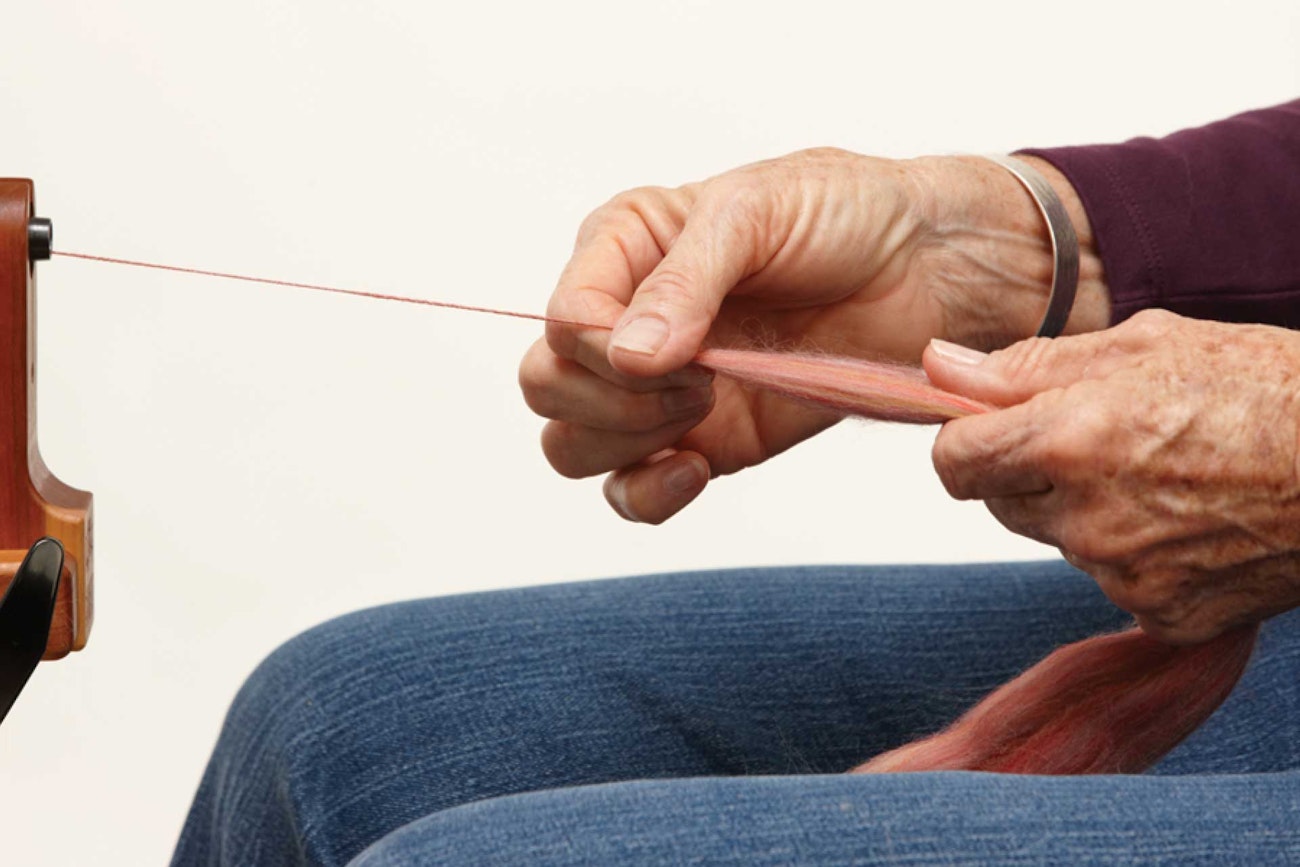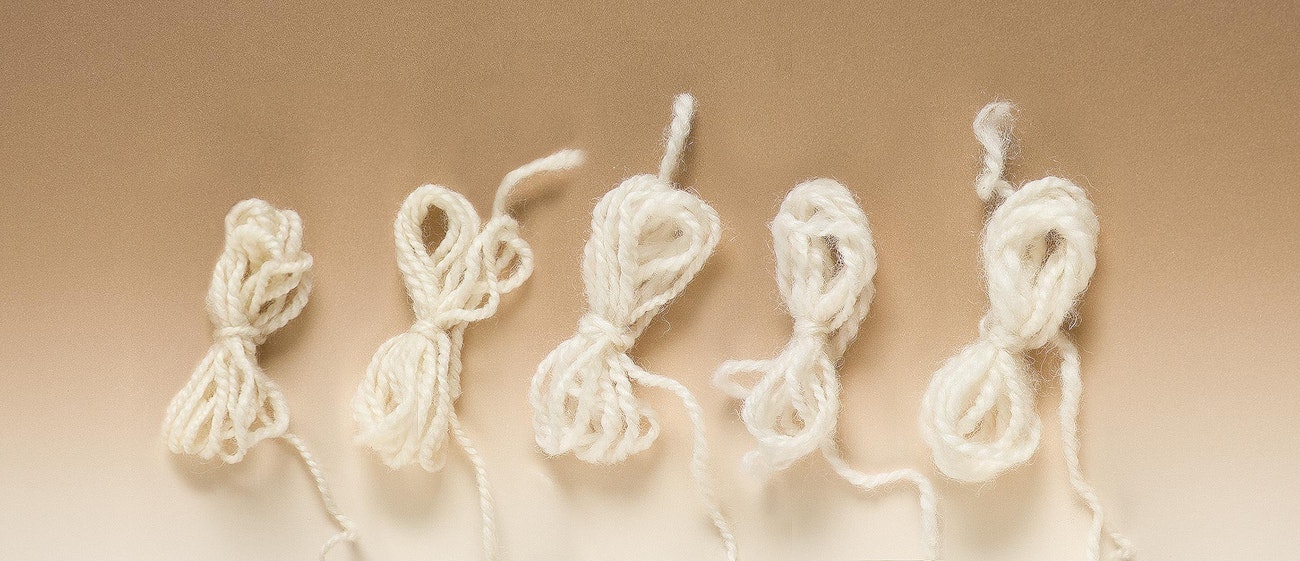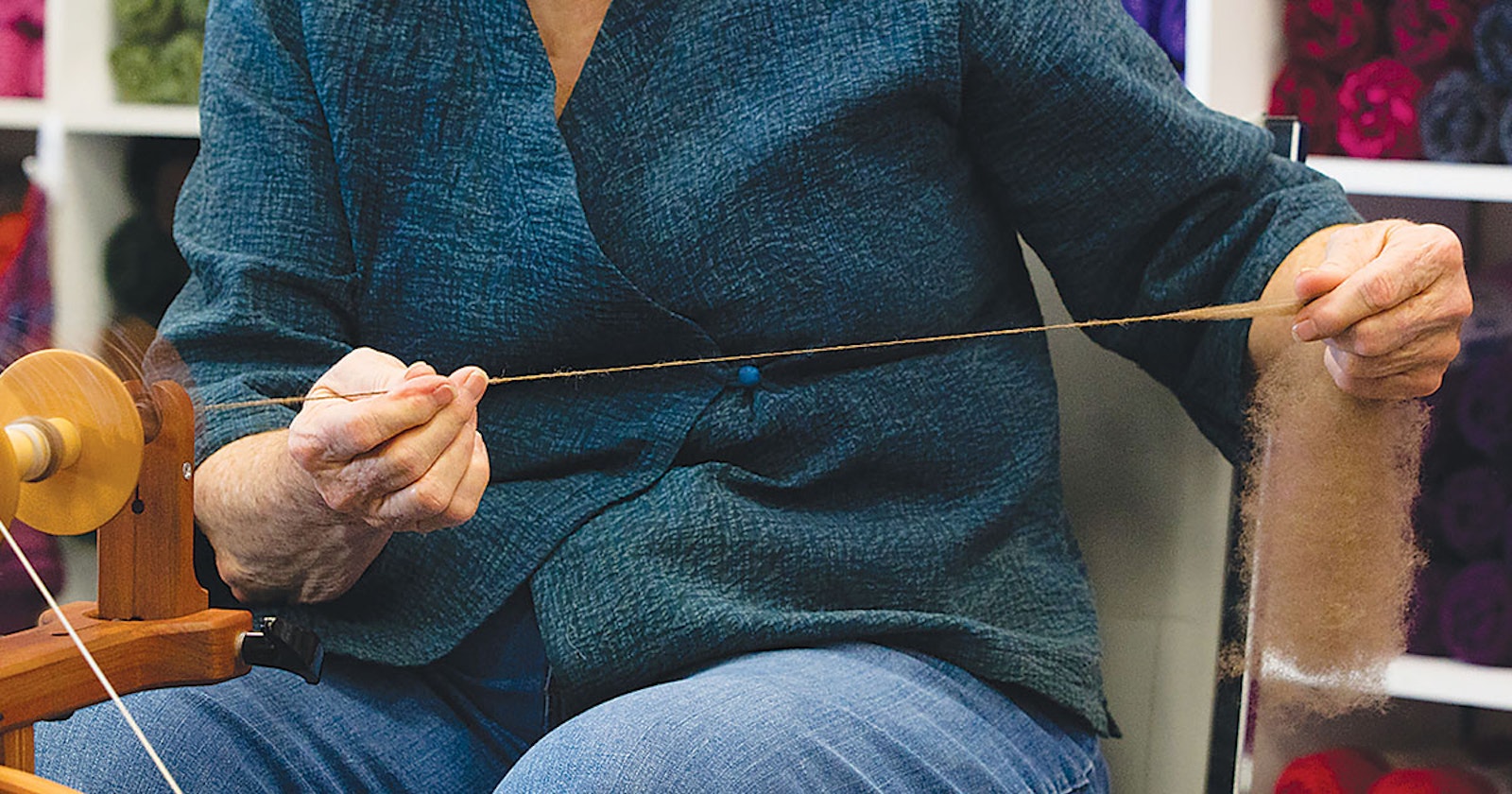Do you spin worsted or woolen yarn? Don’t worry if you don’t know—many spinners do not know what type of yarn they spin. They just continue spinning the same way they did for their first successful skein of yarn.
The difference between worsted and woolen yarns comes from how the fibers are prepared for spinning, the drafting technique that is used, and how twist is allowed to enter the fibers. There is general agreement among spinners about how to spin true worsted yarns and true woolen yarns. However, most of us spin something between those two types of yarn.
Most authors of spinning articles and workshop mentors generally agree that true worsted yarn is spun from fibers 3 inches or longer, handcombed with English-style combs to remove shorter fibers, with the remaining long fibers in a parallel arrangement, using short draw, with the orifice (or spinning) hand leading the twist into the drafted fibers.
There is also general agreement that true woolen yarn is spun from a rolag made with handcards, with the short and long fibers (usually all less than 3 inches long) in a random arrangement, using long draw, and allowing the twist to enter the fibers unrestricted.
However, there is not general agreement about what to call the many yarns we spin that are not true worsted or woolen yarns. Some authorities call everything else semiworsted. I prefer the terminology that Anne Field presents in her book Spinning Wool: Beyond the Basics. Depending on the spinning technique used and how the fibers are prepared, yarns fall into four categories: worsted, semiworsted, woolen, or semiwoolen. In categorizing yarns, the spinning style takes precedence over the type of fiber preparation.
 Teacher Maggie Casey demonstrates a worsted draw—a short forward draw with no twist between your hands. Photo by Joe Coca
Teacher Maggie Casey demonstrates a worsted draw—a short forward draw with no twist between your hands. Photo by Joe Coca
Worsted yarn is spun by pinching the drafted fibers and leading the twist into them, using fibers prepared in a parallel arrangement. Worsted yarn is smooth, lustrous, hardwearing, and has good stitch definition for patterned knitting.
Semiworsted yarn is spun worsted-style, using fibers prepared in a random arrangement. Patterned knitting will not be as distinct as with worsted yarn.
Woolen yarn is spun allowing the twist to enter the drafted fibers, using fibers prepared in a random arrangement. Woolen yarn is fluffy, soft, and light. Knitted garments will be warm from the air trapped in the yarn, but patterns do not show up as clearly.
Semiwoolen yarn is spun woolen-style, using fibers prepared in a parallel arrangement. Because the yarn is smoother than woolen yarn, it will be less itchy when worn next to the skin, provided the fibers are not too coarse for comfort.

Left to right: Worsted, semiwoolen, semiworsted, and two examples of woolen yarn. See below for details on the types of fiber preparation and spinning style used for each sample. Photo by Joe Coca
The following fiber prep and spinning techniques were used in the sample yarns shown in the previous photo (left to right):
- Bluefaced Leicester top, short forward draw (worsted-style). Parallel fibers + worsted spinning = worsted yarn.
- Bluefaced Leicester top, short forward draw (woolen-style). Parallel fibers + woolen spinning = semiwoolen yarn.
- Coopworth carded roving, drafted using short forward draw (worsted-style). Random fibers + worsted spinning = semiworsted yarn.
- Coopworth carded roving drafted using short forward draw (woolen-style). Random fibers + woolen spinning = woolen yarn.
- Coopworth carded roving, drafting against the twist—medium draw (woolen-style). Random fibers + woolen spinning = woolen yarn.
This article was first published in Spin Off Fall 2008.
Also, remember that if you are an active subscriber to Spin Off magazine, you have unlimited access to previous issues, including Fall 2008. See our help center for the step-by-step process on how to access them.
Rudy Amann was mentored in handspinning by Priscilla Gibson-Roberts.
Originally published July 1, 2020; updated February 20, 2023.

